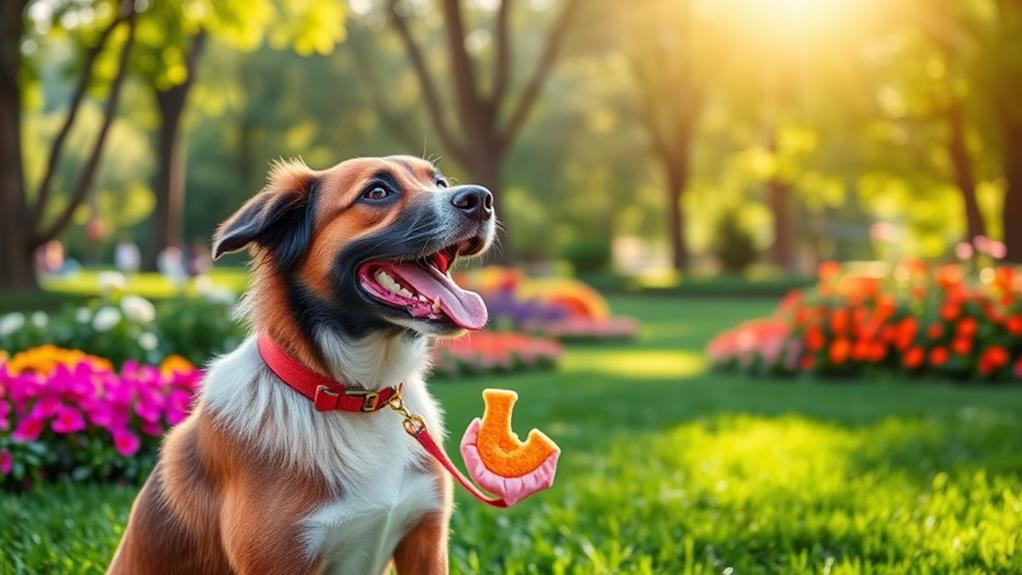Training your dog effectively takes patience and the right approach, especially when using treats. Start by choosing high-value, bite-sized treats that fit your dog's preferences and dietary needs. Remember, timing is pivotal; reward immediately to reinforce good behavior. Keep sessions short and focused, ideally around 5 to 10 minutes. Incorporate a variety of treats to keep your dog engaged and happy. Be consistent with commands among all household members. Don't forget to celebrate small victories and track progress. These strategies will strengthen your bond and improve training effectiveness, and there's even more to explore for a successful training journey!
Choose the Right Treats
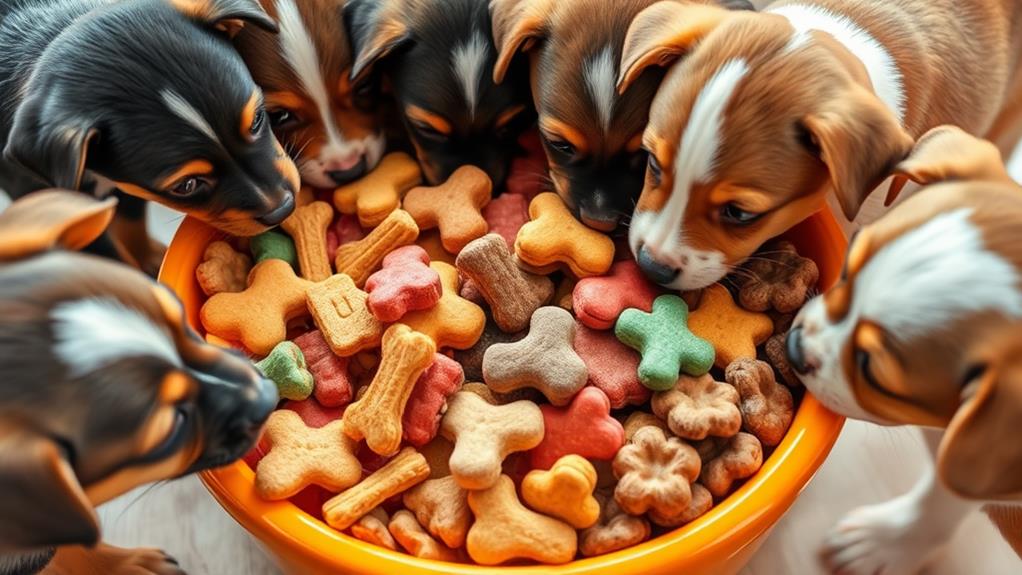
Choosing the right treats can make all the difference in your dog training success. When you're selecting treats, think about your dog's preferences and dietary needs. Grab a variety of options to see what excites your pup the most. High-value treats, such as small pieces of chicken or cheese, often work wonders during training sessions. They can keep your dog motivated and enthusiastic to learn.
You'll want to examine the size of the treats, too. Small, bite-sized pieces are ideal since they allow for quick rewards without overwhelming your dog. Remember, you want to maintain their focus on training, not on chewing! Avoid treats that are too hard or large, which may distract them from the task at hand.
Also, don't forget about your dog's health. Opt for treats that are low in calories and free from artificial ingredients. You can even use their regular kibble as a reward, especially if your dog is food-driven. Just adjust their meal portions accordingly to avoid overfeeding. By choosing the right treats, you'll set your pup up for success and make training a fun and rewarding experience for both of you!
Timing Is Everything
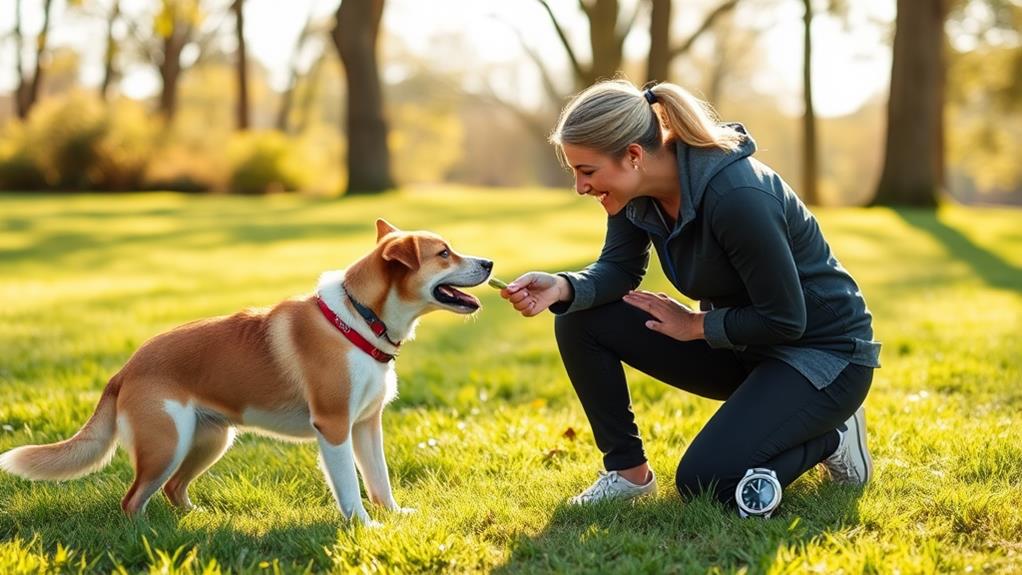
Getting the timing right during training sessions can make or break your dog's learning experience. When you reward your dog immediately after they perform a desired behavior, it reinforces that action in their mind.
If you wait too long to give the treat, your dog mightn't connect the reward with the behavior you want to encourage.
For example, if your dog sits and you wait a few seconds, they may think the treat is for something else, like simply being there. You want them to understand that the treat is a direct result of their action.
Moreover, consistency is essential. Always reward your dog right after they exhibit the behavior you're training them to learn. This way, they'll associate the treat with the correct action every time.
In addition to rewarding, you should also be mindful of timing when correcting unwanted behavior. If you catch your dog in the act of misbehaving, address it immediately. This helps them comprehend what they did wrong.
Ultimately, effective timing in both rewards and corrections will enhance your dog's learning and strengthen your bond during training sessions.
Start With Basic Commands

Starting with basic commands is essential for laying a solid foundation in your dog's training. These commands not only help establish communication but also foster a sense of discipline. Begin with simple instructions like "sit," "stay," and "come." These commands are pivotal for both your dog's safety and your ability to manage their behavior.
When teaching these commands, remember to be patient and consistent. Use a clear, firm voice, but keep your tone positive to encourage your dog. Start in a quiet environment free from distractions, so your dog can focus on you.
Once your dog masters a command, gradually increase the difficulty by introducing distractions or practicing in different locations. This helps them learn to obey regardless of the situation.
It's also important to keep training sessions short and engaging. Aim for about 5 to 10 minutes each time, as dogs can lose interest quickly. Repeating these basic commands regularly will reinforce their significance and boost your dog's confidence.
With a solid grasp of basic commands, you'll be well on your way to a well-behaved and obedient companion, ready to tackle more advanced training down the line.
Use Treats for Positive Reinforcement
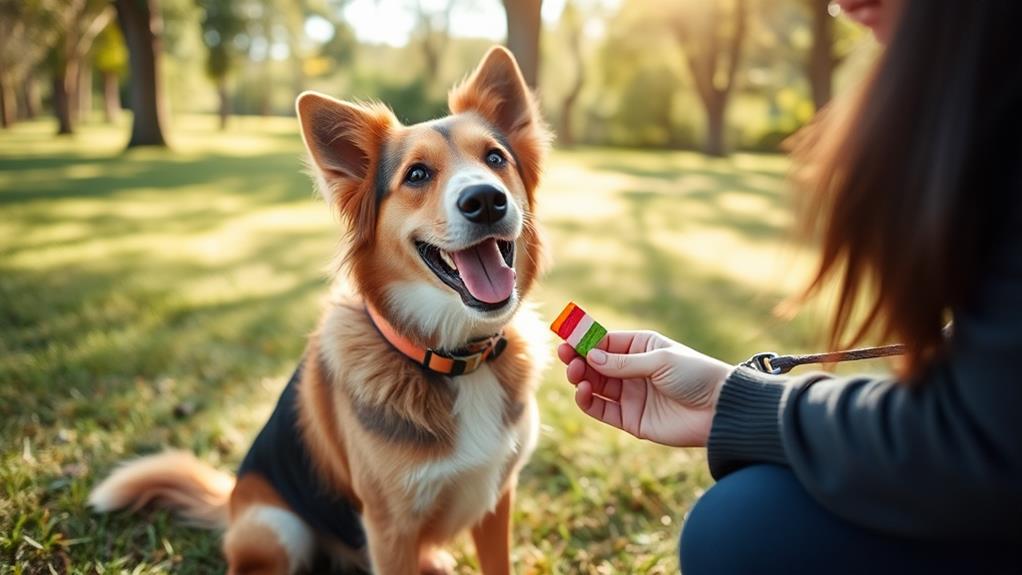
Using treats for positive reinforcement can greatly enhance your dog training experience. When your dog performs a desired behavior, rewarding them with a treat immediately reinforces that action. This method helps your furry friend understand what you expect from them. It creates a positive association with learning and encourages them to repeat the behavior.
Choose treats that your dog truly loves—this increases the likelihood they'll respond. Keep the treats small so you can reward them frequently without overloading on calories. Timing is imperative; deliver the treat right after your dog completes the command. This immediate reward solidifies the connection between the action and the treat.
Be consistent with your rewards. If your dog responds well to a command one day but doesn't get a treat the next, they might become confused. Make sure everyone in your household is on the same page with training techniques and rewards.
As you train, vary the treats occasionally, mixing in praise and affection as rewards. This keeps your dog engaged and excited about training. Remember, positive reinforcement is about building trust and a strong bond, making your training sessions enjoyable for both you and your pup.
Keep Training Sessions Short
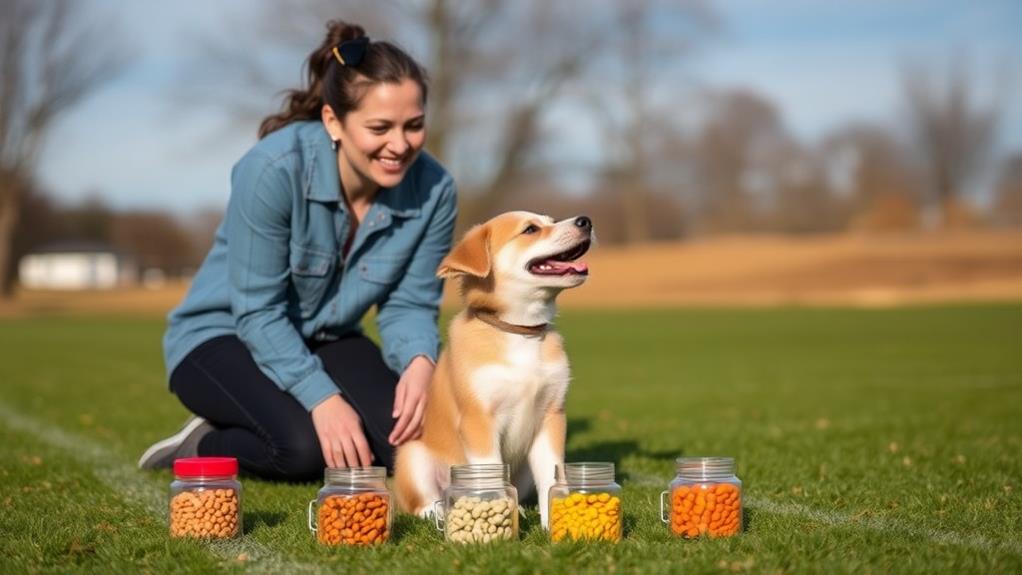
Training sessions should be brief and focused to keep your dog engaged and keen to learn. Ideally, aim for 5 to 10-minute sessions, especially for younger dogs or those new to training. This short duration helps prevent boredom and frustration for both you and your furry friend.
During these sessions, concentrate on one specific command or behavior that you want to teach. By breaking down training into smaller chunks, your dog can grasp concepts more easily. You'll also notice that shorter sessions allow for increased enthusiasm and focus, making learning feel like a fun game rather than a chore.
Always observe your dog's body language. If they seem distracted or lose interest, it's time to wrap it up. Ending on a positive note—perhaps with a successful command or a good behavior—reinforces their motivation for next time.
Consistency is key, so try to train multiple times a day, even if each session is short. This approach not only keeps your dog ardent to learn but also helps solidify the behaviors you're teaching. Remember, quality trumps quantity when it comes to effective dog training.
Gradually Reduce Treats

As your dog becomes more familiar with commands and behaviors, it's time to gradually reduce the treats you give them as rewards. This process is essential for helping your dog learn to respond to commands without relying solely on food. Start by giving treats less frequently; for example, if you initially rewarded every correct behavior, switch to rewarding every second or third time.
Pay attention to your dog's understanding of the command. If they successfully follow through multiple times in a row, it's a good indicator that they're ready for fewer treats. You can also mix in verbal praise or petting as alternative rewards, which helps reinforce positive behavior without treats.
As you decrease treat frequency, maintain a balance. If your dog struggles with a command, it's okay to revert to more frequent rewards temporarily. The goal is to ascertain your dog feels motivated and engaged. Keep the training sessions positive and rewarding, so your dog learns that good behavior leads to praise, playtime, or other enjoyable experiences, not just treats. This approach fosters a more well-rounded and reliable response to commands over time.
Incorporate Variety in Treats
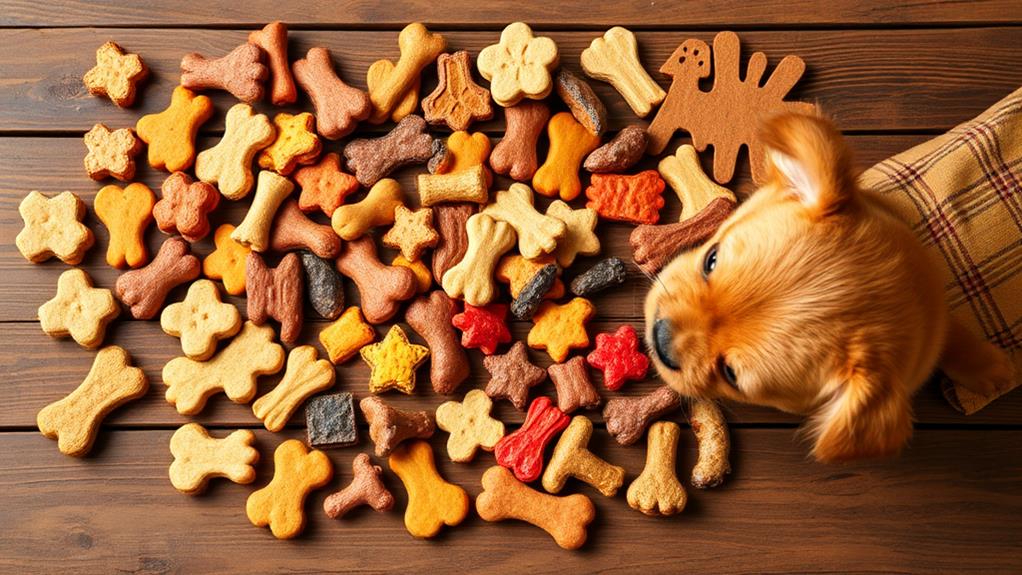
Incorporating variety in treats can substantially enhance your dog's training experience. Dogs can get bored with the same flavors or textures over time, so mixing things up keeps their interest and motivation high. Consider rotating between different types of treats, such as crunchy biscuits, soft chews, or even bits of fresh fruits and veggies. This not only makes training sessions more exciting but also helps you discover which treats your dog loves the most.
You can also try using homemade treats or store-bought ones with all-natural ingredients. Experiment with different flavors like chicken, beef, or peanut butter to see what gets your pup's tail wagging. Remember, the goal is to create a positive association with training. If your dog is enthusiastic about the treats, they'll be more engaged during sessions.
Additionally, using a mix of small and larger treats can keep your training sessions dynamic. For instance, use smaller pieces for basic commands and save the larger, more enticing treats for complex tricks or accomplishments. By keeping your dog guessing, you'll maintain their excitement and willingness to learn. So go ahead, get creative with your treat selection!
Be Consistent With Commands
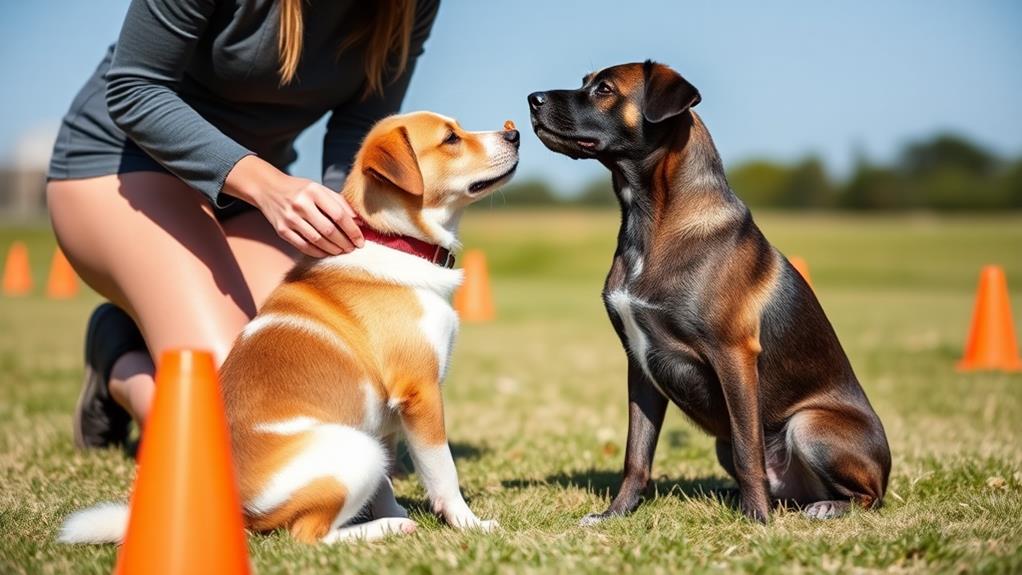
Keeping your dog engaged with a variety of treats is important, but just as vital is being consistent with your commands. Dogs thrive on routine and clear expectations, so using the same words and tone every time you give a command helps them understand what you want. If you say "sit" one day and "down" the next when you mean the same thing, your dog will get confused.
Make sure everyone in your household uses the same commands too. If one person says "come" and another says "here," it complicates your dog's learning process. Consistency isn't just about the words; it's also about the expectations. Your dog will respond better if you always require them to sit before they get treats or attention.
Additionally, maintain a positive attitude. If you're frustrated, your dog might pick up on that energy, making it harder for them to focus. So, stay calm and patient. Remember, practicing the same commands regularly reinforces your dog's understanding and builds their confidence. With consistent commands and clear communication, you'll strengthen your bond and make training more effective.
Train in Different Environments
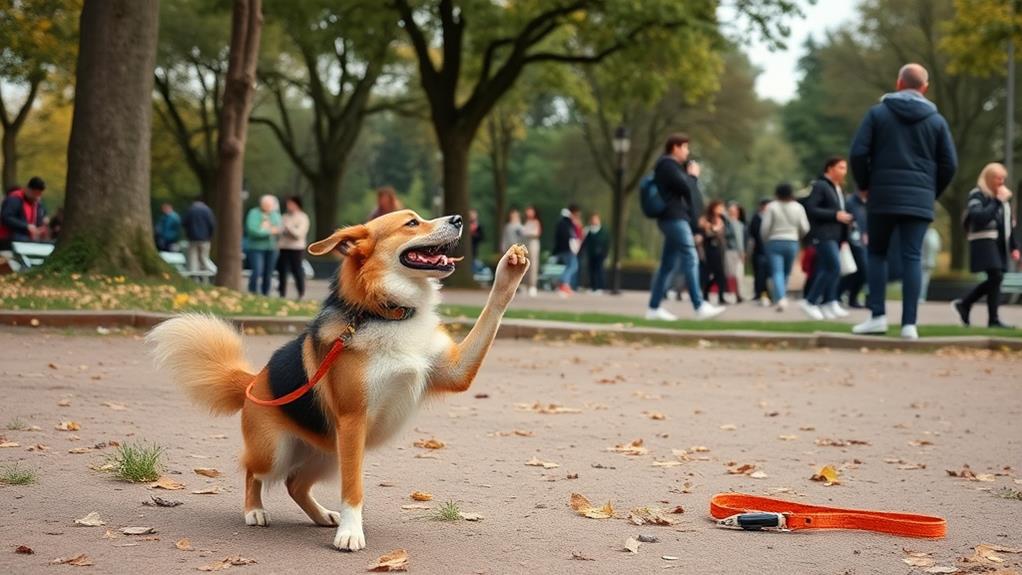
Training your dog in different environments is pivotal for their development and adaptability. It helps your furry friend learn to focus, regardless of distractions around them. Start in a familiar space, like your living room or backyard, where your dog can grasp basic commands.
Once they've mastered those, gradually introduce new locations. Take your training sessions to local parks, pet-friendly stores, or even busy streets. Each new environment presents unique challenges, from sounds and smells to other animals and people. This variety teaches your dog to remain attentive and responsive, no matter where you are.
Keep training sessions short and engaging. Use treats to reward good behavior, reinforcing the skills you want your dog to learn. Make sure you're patient; it might take a few sessions for your dog to adjust to their surroundings.
Celebrate Small Victories
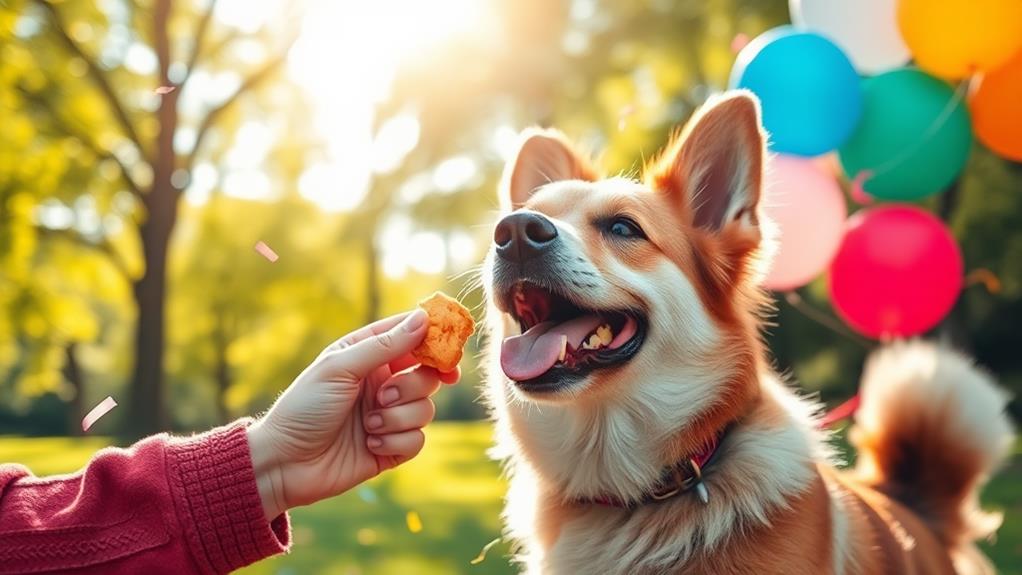
Celebrating small victories is essential for maintaining motivation during your dog training journey. Every time your dog successfully follows a command or demonstrates good behavior, it's a moment worth acknowledging. These small wins help reinforce positive behavior, both for your dog and for you as a trainer.
When your pup sits on command for the first time, or refrains from jumping on guests, take a moment to celebrate. Use treats, praise, or a quick play session to reward their success. This not only strengthens the bond between you two but also encourages your dog to repeat the behavior.
Keep a training journal to track these victories. Writing down each success, no matter how small, can help you see the progress your dog is making and remind you of their improvements.
Frequently Asked Questions
How Do I Know if My Dog Is Food Motivated?
You can tell your dog's food motivated if they enthusiastically respond to treats, show excitement during mealtime, or focus intently when you hold food. Observe their reactions and enthusiasm to gauge their motivation levels.
Can I Use Toys Instead of Treats for Training?
Think of your dog's favorite toy as a shiny trophy. You can use toys in training, especially if they spark excitement. Just guarantee your dog's engaged; playtime can be as motivating as treats!
What if My Dog Doesn't Like Any Treats?
If your dog doesn't like any treats, don't worry! You can try using toys, praise, or affection as rewards. Experiment with different options to find what motivates your dog best during training sessions.
How Often Should I Train My Dog Each Week?
You should train your dog several times a week, ideally three to five sessions. Each session can last about 5 to 15 minutes. Consistency helps reinforce learning and strengthens your bond with your furry friend.
Are There Any Treats That Could Harm My Dog?
Just like a hidden thorn in a rose, some treats can harm your dog. Avoid those with chocolate, grapes, or xylitol. Always check ingredient labels, and consult your vet for safe options to keep your pup healthy.
Conclusion
Incorporating these dog training tips with treats can make a world of difference in your pup's learning journey. Did you know that dogs respond 30% better to training when rewards are involved? By choosing the right treats, timing your rewards, and remaining consistent, you'll not only teach your dog essential commands but also strengthen your bond. Remember, patience and variety are key—celebrate those small victories along the way, and you'll both enjoy the process!

